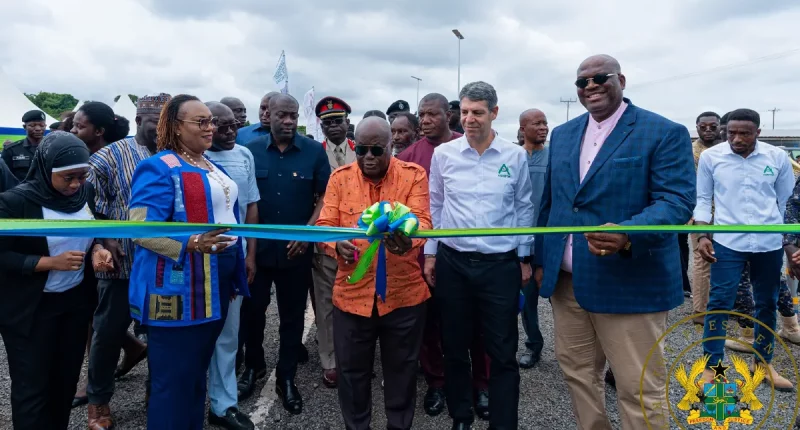President Nana Addo Danquah Akufo-Addo has commissioned the National Aquaculture Centre and Commercial Farms project in the Adentan Municipality of the Greater Accra Region.
The $10-million- project, located on the Dairy Farms at Amrahia, is aimed at transforming and growing the aquaculture subsector to augment domestic production and reduce fish imports.
With its state-of-the-art facilities, the Centre will grow tilapia, catfish, and prawns, all of which are essential ingredients of the Ghanaian and West African diet. It is expected to produce 50,000 metric tons of fish within five years.
Additionally, the project aims to train and set up 200 ‘aquapreneurs’ within five years, increase employment opportunities for fish farmers through modernized aquaculture technology, and engage youth graduates and women in the aquaculture value chain to reduce poverty.
At a colourful ceremony on Thursday, President Akufo-Addo said the project was yet another milestone in the Government’s quest to develop the fisheries and aquaculture sector to guarantee food security in the country.
He said the Centre, which compliments the Ministry of Fisheries and Aquaculture’s development programme, “Agriculture for Food and Jobs,” reaffirmed the government’s determination to also reduce graduate unemployment in the country.
It is estimated that some three million people are employed along the entire value chain of the fisheries and Aquaculture industries. Some 60 per cent of the nation’s annual protein is derived from the fishing sector.
The sector contributes about 11 per cent of agriculture’s GDP, and it employs about 20 per cent of Ghana’s workforce through direct and indirect means. Last year, the country earned some $254 million from the export of fish and fish products.
However, the country’s marine stocks face significant threats from pollution, biodiversity loss, ocean dumping, overfishing, and other maritime pressures, including over-exploitation, illegal unreported and unregulated fishing, piracy and trafficking.
President Akufo-Addo told the gathering that the project was a direct response to the numerous threats to the fisheries sector.
It would help address the problem of dwindling catches from the sea and the increasing demand for fish, as well as increase domestic fish production and expertise in aquaculture and create jobs for the youth.
The aim of the Centre is to produce fish products and create employment through the training of the local population as fish farmers with emphasis on graduates from our universities.”
According to the President, as “water bodies dry up and become polluted due to human activities and as the pressure on land acquisition increases, modernisation of aquaculture must involve the utilization of less space of water but at the same time, must increase productivity”.
“One such modern technology that has these attributes is the Recirculating Aquaculture System (RAS), which is being employed by the Centre and commissioning today. Not only does this system offer minimum maintenance costs, and relatively moderate to low consumption. It also guarantees the production of healthy and export-ready products.
“It will ensure the production of 25 metric tons of tilapia, 25 metric tons of catfish, and 4 metric tons of prawns annually. This will ultimately mean an increase in fish production, reduction in fish exports, and the enrichment of local capacity and technical know-how through the training of youth at the Centre,” he said.
Madam Hawa Koomson, the Minister for Fisheries and Aquaculture noted that aquaculture development in Ghana was crucial as fish protein constituted about 60 per cent of all protein needs of Ghanaians.
She said the operationalization of the sector would help to improve the implementation of the Aquaculture for Food and Jobs initiative being spearheaded by the ministry to ensure socioeconomic development and food security for present and future generations.
The Minister disclosed that the Ministry had prepared a new Ghana National Aquaculture Development Plan that would be implemented between 2023 and 2027 for the sustainable development aquaculture subsector.
She said the implementation of the plan was expected to improve aquaculture production from 89,376 metric tons in 2021 to 211,697 metric tons by the end of 2027.
She thanked the project contractors, Agritop Limited, and the consultants, ABA and Partners, for the timely completion of the project, which she was confident would accelerate aquaculture development, meet domestic needs and boost foreign exchange earnings through fish exports.





